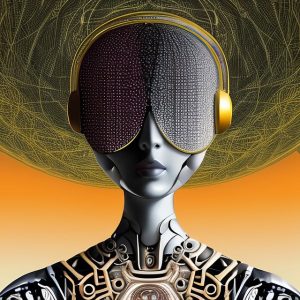Automated Transcription
 In the rapidly evolving landscape of transcription, voice-recognition software and artificial intelligence (AI) have emerged as powerful tools, thus revolutionising the way we convert spoken language into written text. As with any technological advancement, there are both advantages and disadvantages to the integration of voice recognition and AI in transcription services. This article explores the pros and cons of these transformative technologies for automated transcription and their impact on various industries.
In the rapidly evolving landscape of transcription, voice-recognition software and artificial intelligence (AI) have emerged as powerful tools, thus revolutionising the way we convert spoken language into written text. As with any technological advancement, there are both advantages and disadvantages to the integration of voice recognition and AI in transcription services. This article explores the pros and cons of these transformative technologies for automated transcription and their impact on various industries.
Pros of Automated Transcription
Speed
Voice-recognition software significantly accelerates the transcription process. AI algorithms can process and transcribe spoken words at remarkable speeds, thus reducing the time and effort required for manual transcription. This efficiency is particularly beneficial in industries where quick documentation is crucial.
Cost-Effectiveness
Automated transcription services powered by AI can be more cost-effective than hiring human transcriptionists. The automation of the transcription process minimises labour costs and allows organisations to allocate resources more efficiently. This cost-effectiveness is especially advantageous for small businesses and startups with limited budgets.
Accessibility
Voice-recognition technology enhances accessibility by providing real-time transcription services. This is invaluable for individuals with disabilities who may rely on transcription to access spoken content. Automated transcription services make information more inclusive and readily available to a wider audience.
Continuous Improvement through Machine Learning
AI-driven transcription services leverage machine learning algorithms to improve accuracy over time. These algorithms learn from vast datasets, adapting to various accents, speech patterns, and languages. This continuous improvement results in increasingly accurate transcriptions, reducing errors and enhancing the overall quality of transcription services.
Integration with Other Technologies
Voice-recognition software and AI transcription services seamlessly integrate with other technologies. This allows for easy incorporation into existing workflows and systems, providing a more comprehensive solution. integration with virtual assistants, communication platforms, and mobile applications further expands the versatility of these technologies.
Cons of Automated Transcription
Accuracy Challenges
Despite significant advancements, voice-recognition software is not infallible. Accents, background noise, and variation in speech patterns, therefore, can pose challenges to accurate transcription. In situations where precision is paramount, such as legal or medical contexts, relying solely on AI may lead to errors that human transcriptionists might avoid.
Contextual Understanding Limitations
AI may struggle with understanding context and nuances, leading to inaccuracies in transcriptions. Ambiguous phrases, homophones, and complex sentence structures may be misinterpreted. Human transcriptionists excel in understanding the subtleties of language, context, and emotion, providing a level of accuracy that AI systems find challenging to replicate.
Security and Privacy Concerns
Transcription often involves sensitive and confidential information, particularly in healthcare, legal, and corporate settings. Concerns regarding the security and privacy of data processed by AI transcription services have raised valid ethical considerations. Organisations must ensure robust security measures to safeguard sensitive information from unauthorised access or breaches.
Initial Setup and Training Requirements
Implementing voice-recognition and AI transcription systems requires an initial investment in setup and training. Organisations must invest time and resources to finetune the system for optimal performance. Additionally, ongoing maintenance and updates are necessary to keep up with evolving language patterns and technological advancements.
Dependency on Technology
As organisations increasingly rely on AI for transcription services, there is a risk of overdependency on technology. This dependence may result in reduced human oversight, potentially overlooking critical errors or misinterpretations that a human transcriber might catch.
 Voice-recognition software and AI have undeniably transformed the landscape of transcription, offering efficiency, speed, and accessibility. However, the inherent challenges, such as accuracy limitations and privacy concerns, underscore the need for a balanced approach. As technology continues to advance, finding this balance becomes essential to harness the full potential of voice recognition and AI in transcription while mitigating associated risks.
Voice-recognition software and AI have undeniably transformed the landscape of transcription, offering efficiency, speed, and accessibility. However, the inherent challenges, such as accuracy limitations and privacy concerns, underscore the need for a balanced approach. As technology continues to advance, finding this balance becomes essential to harness the full potential of voice recognition and AI in transcription while mitigating associated risks.
It is important to note, however, that correcting an AI-generated transcript or a transcript done using voice-recognition software often takes longer for an experienced transcriptionist than if the transcriptionist were to transcribe from scratch. This then makes the process less cost-effective and more time-consuming.
Contact us to find out how we can assist you with your transcription requirements.

